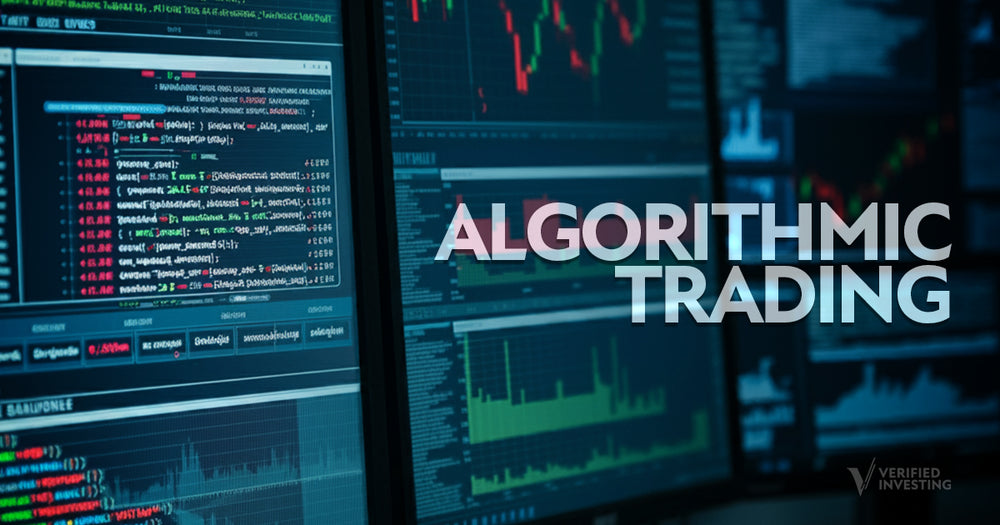The Pros and Cons of Algorithmic Trading

Algorithmic trading is a form of computerized trading that uses specialized servers and high-speed internet connections to automatically make trades in fractions of a second. These algorithms, or computer programs, employ unique sets of trading rules to analyze market variables such as timing, volume, and prices when making trades.
THE PROS OF ALGORITHMIC TRADING
Speed and Efficiency:
Algorithmic trading models execute trades at the best possible prices, taking advantage of fleeting market opportunities faster than a human could perceive them. This allows them to spot and follow trends, capitalizing on them automatically. Trading algos can detect small price discrepancies between two exchanges and scalp a profit from the arbitrage in the second before it corrects. (Humans can learn to trade quickly and profitably in the Verified Investing 1 Minute Scalpel trading course.)
Accuracy:
Trading algorithms conform to preprogrammed, strict rules, making them immune to human errors, such as mistyped entries and fat-finger trades that can cause large losses for the trading firm and irrational overall market effects.
24/7 Market Monitoring:
Trading algorithms never sleep. By monitoring global markets 24/7, they can capitalize on trading opportunities across geographically different markets and react to market-moving events regardless of when they occur.
Discipline:
Trading algorithms only react to market conditions according to their pre-programmed ruleset. Once a trade meets the requirements, it is automatically executed. This eliminates emotional human trading. Algos can also dispassionately handle the entire asset selection process. They decide what to trade, the exit and entry points, and when to execute the trade, without human intervention.
Backtested:
The performance of trading algorithms is backtested using historical data before they are used to make actual trades. The decisions made by the models when presented with past market conditions are compared to historical results, and the models are tweaked accordingly.
THE CONS OF ALGORITHMIC TRADING
Over-Optimization:
One concern when building complex trading algorithms is that the model may become so overtuned to match historical data that it cannot function in modern-day markets. A related risk is that in trying to account for all possible trading situations, an algorithm ends up trapped in a “software straightjacket” where few real-life trades meet all the restrictions coded into its programming.
Complacency:
A risk that investing firms run when using algorithmic trading is becoming complacent about a model’s performance, neglecting to update it when market conditions change. Resisting spending the money required to upgrade to a newer version of an algorithm when the current version “isn’t broken” is a false economy that results in underperformance compared to peers and historical results.
Costs:
Running and maintaining trading algorithms incurs notable costs. High-speed internet connections, robust servers, and hiring professionals to constantly monitor the systems are just some recurring costs.
Complexity:
Trading algorithm suites are amazingly complex, even when compared to other enterprise software. Knowledge gained from operating one model won’t necessarily transfer to another. The interactions between the profit-seeking, execution, and high-frequency algorithms that make up the whole trading model can interact in counter-intuitive ways. Sometimes it’s impossible to say why a model makes some of the trades it does.
Liquidity Risks
Unforeseen events can cause trading algorithms to buy or sell simultaneously, amplifying market movements and drying up liquidity. This risk is compounded when many traders use similar models in their algorithms, increasing the chances that they will all act the same way.
The worst of these outcomes have been averted by the implementation of automated trading halts. After a large sell order in 2010 caused a flash crash that sent the Dow 1,000 points lower, exchanges deployed measures that will automatically halt trading when prices move too far, too quickly. This cooling off period allows human intervention in an algorithm’s trading if necessary.
CONCLUSION
Algo trading accounts for 60% to 70% of market volume on the NYSE, but you don’t have to cede total control of your portfolio to a computer to benefit from the advances in trading that it provides. Many experienced traders use AI-driven algorithms to alert them to trading opportunities they can trade on at their discretion. The trading computers are here to stay. How you take advantage of the opportunities they present is up to you!
Trading involves substantial risk. All content is for educational purposes only and should not be considered financial advice or recommendations to buy or sell any asset. Read full terms of service.




